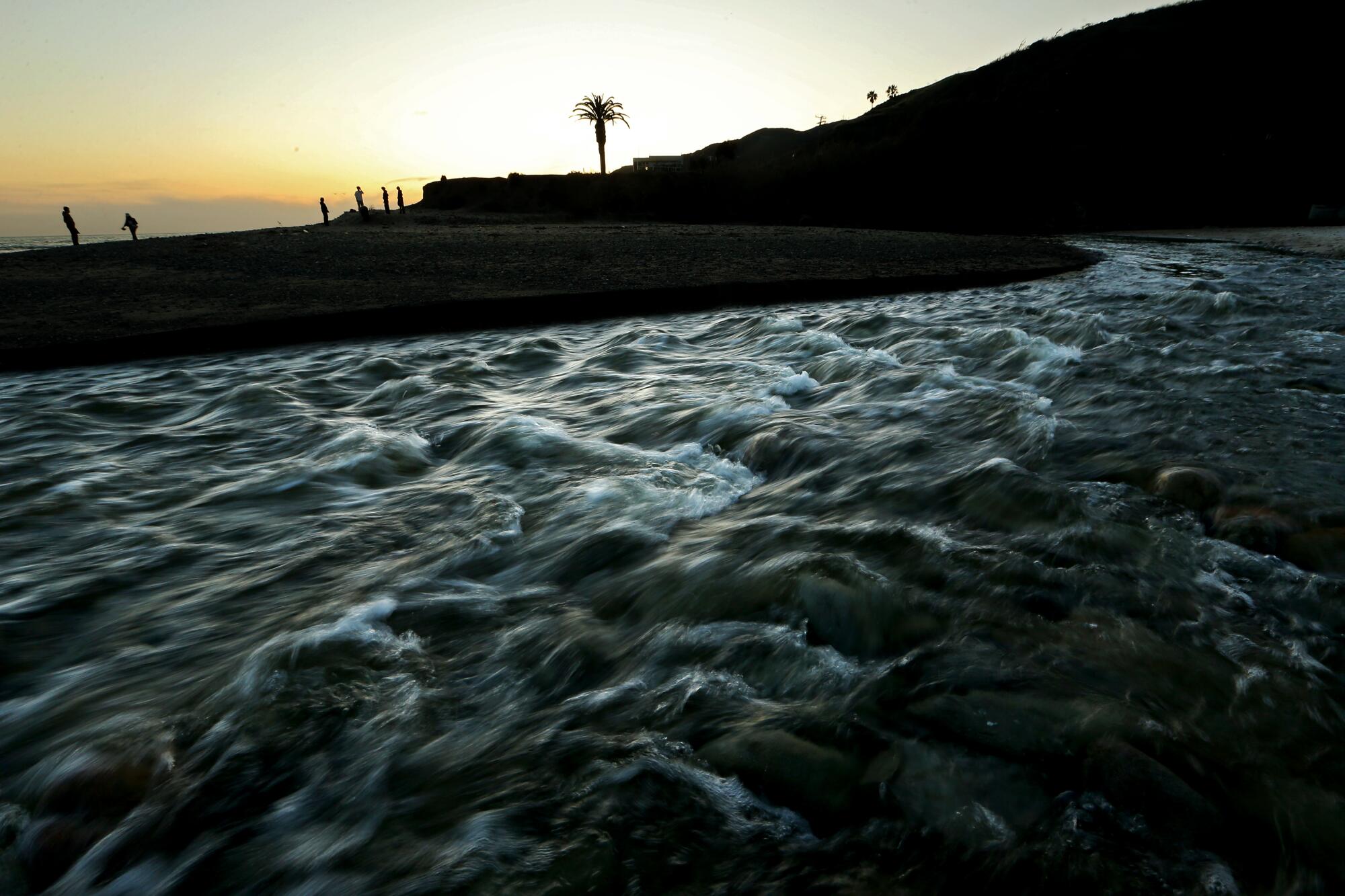
Record-setting storms in 2023 filled California’s major reservoirs to the brim, providing some relief in a decades-long drought, but how much of that record rain trickled underground?
Shujuan Mao of Stanford University and her colleagues used a surprising technique to answer this question for the greater Los Angeles metropolitan area. They analyzed changes in the velocity of seismic waves traveling through the LA basin, tracking these changes in space and time between January and October 2023.
As Mao reported at the Seismological Society of America (SSA)’s 2024 Annual Meeting, their study found that groundwater levels almost completely recovered at very shallow depths—about 50 meters below the surface. However, only about 25% of the groundwater lost over the past two decades was replenished at about 300 meters and deeper, likely because it is more challenging for stormwater to percolate into deeper layers of the earth.
“That means that a single epic year of storms is not enough to restore the groundwater depletion accumulated over the recent droughts. It takes many more wet years for the deep aquifer to fully recover,” Mao said.
Groundwater contributes more than 60% of the water supply used in California during drought conditions, she noted.
Mao and her colleagues are pioneering the use of seismic data to understand groundwater levels in the Los Angeles basin, as a complement to other methods used to measure groundwater levels. The most traditional method involves digging wells, which is expensive and only offers a “point scale measurement,” Mao explained. “You don’t know what the level is between two wells, or in other aquifer layers shallower or deeper relative to your well.”
More recently, researchers have been using satellite measurements to detect small changes in Earth’s surface deformation or gravity field, which works well to infer changes in groundwater storage over time and area. “These surface measurements couldn’t tell us what’s happening at different depths,” said Mao, “but that’s where we as seismologists can help.”
With data from 65 broadband seismographs in the Southern California Seismic Network, the researchers looked at changes in the propagation speed of seismic waves. The data they used are the “background” seismic vibrations generated by the oceans, winds, and human activity—not the seismic waves associated with earthquakes.
“These background seismic vibrations are continuous, which allow us to measure and monitor the seismic velocity changes continuously,” Mao said.
Seismic wave speed varies with the mechanical state of materials that the waves are passing through. When the groundwater level increases, the pressure in the porous space among rocks increases, and the seismic waves propagate slower through this porous rock.
The researchers found that their estimates of groundwater storage calculated from seismic velocity change compared well with groundwater storage measurements from well and satellite data.
The researchers also found prominent aquifer replenishment in San Gabriel Valley and Raymond Basin, likely due to surface or subsurface flows from the San Gabriel mountains.
The combination of a dense seismic network and a pressing water shortage made Los Angeles “an ideal place to showcase how existing seismic data can contribute to the monitoring, understanding, and management of groundwater aquifers,” said Mao.
Seismic data would likely be integrated with many types of measurements to produce the comprehensive picture of groundwater dynamics needed to manage the valuable resource in a data-informed and sustainable manner, she added.
Mao, who will be an assistant professor at The University of Texas at Austin in August, said she will apply seismic techniques in Austin to monitor how aquifers in that region respond to artificial recharge operations.
